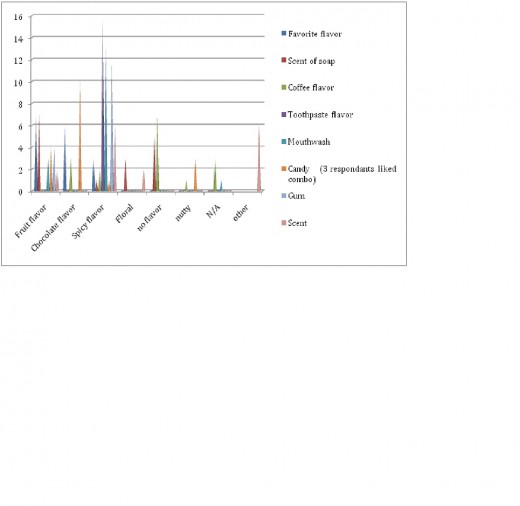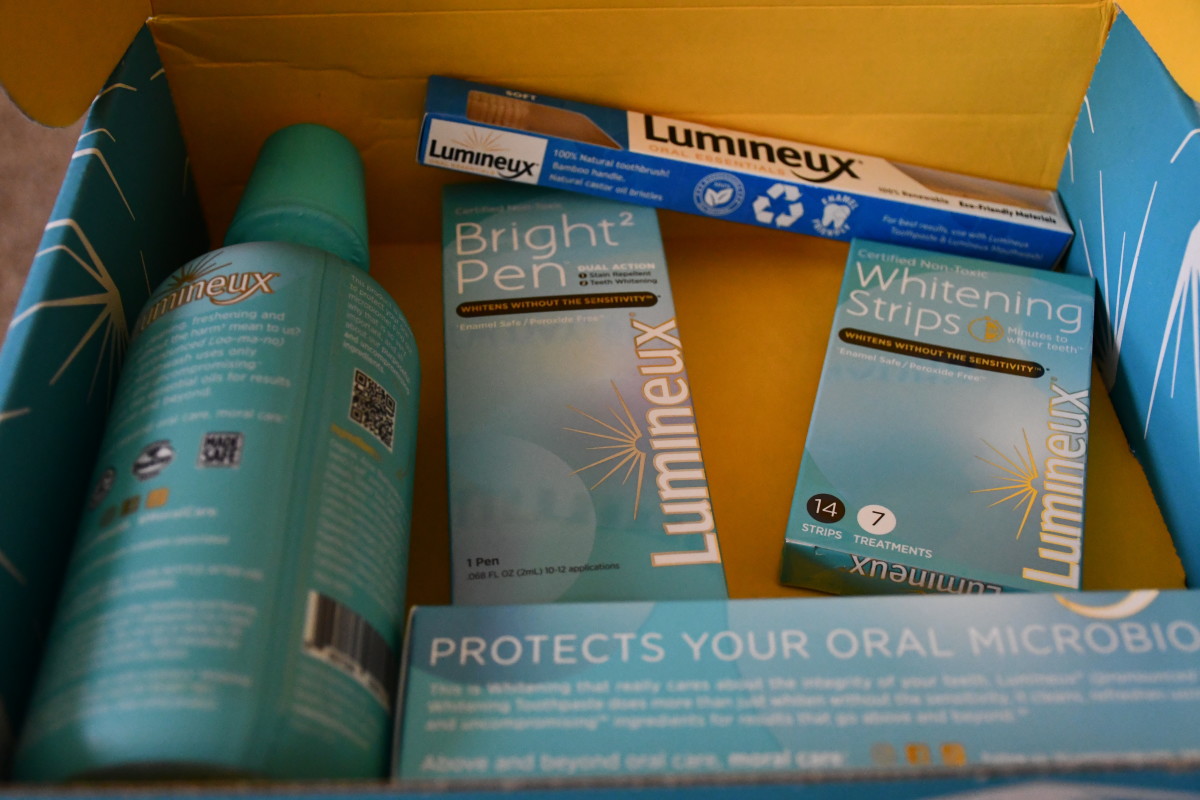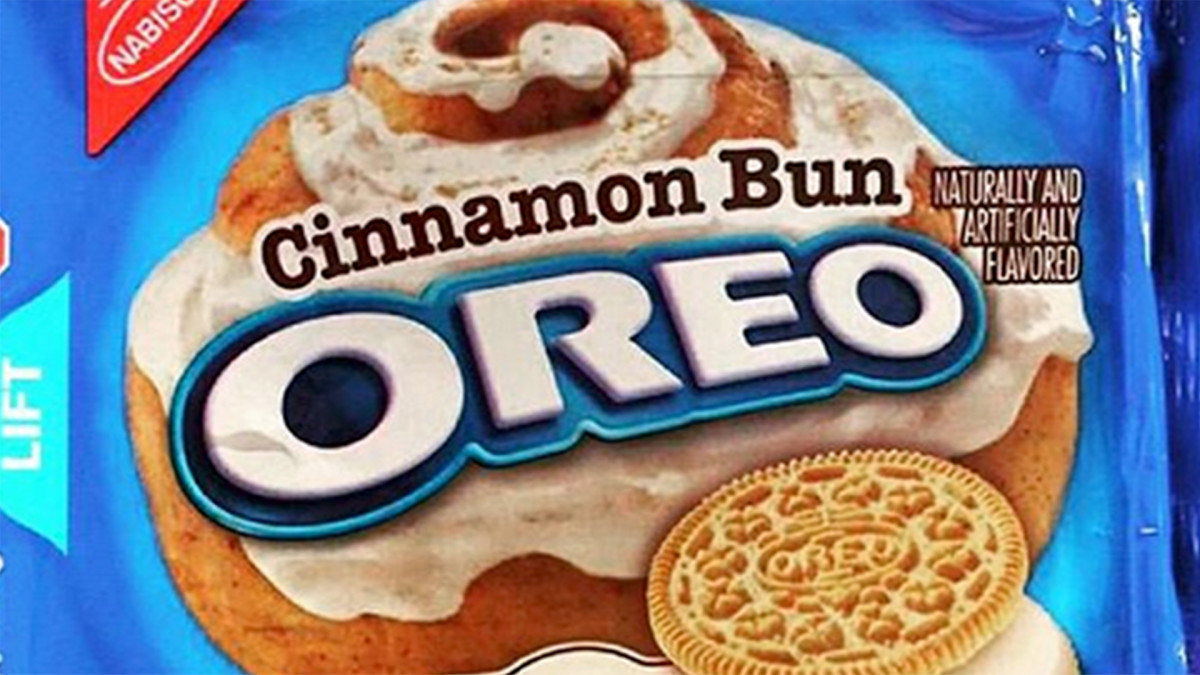Business Research Toothpaste Flavors
Scaling Study Paper
Artificial flavors and scents have changed the products that people buy in the current market. Perfumes and colognes have been in the consumer’s life ever since the earlier days of trade. The same can be said for spices and flowers. Currently one can choose from any number of tastes and smells for a variety of products. Doing a small scale study on the topic of how favorite flavors and scents effect the products consumers choose. Examining the questionnaire will give conclusions on whether the study is valid, invalid, or reliable.
Questionnaire
The questionnaire holds 10 questions for respondents about favorite flavors, scents, and products that involve flavors and scents. The two obvious questions are “What is your favorite flavor and what is your favorite scent?” for the questionnaire. All of the questions allow the respondents to reply with their own specific choices, which allow answers to include combination flavors and flavors normally expensive but more available because of artificial flavors. The questions were simple questions with attention to question order, and keeping the survey short to increase the response number. The products the questionnaire includes are chewing gum, juice, candy, mouthwash, toothpaste, coffee, soap, and fruit. Some of the questions are about personal preference because of options, and some about preferences because of a lack of options. The questions of the survey are free-response questions or also known as open-ended questions, which are sufficient more for smaller questionnaire but not so good for larger questionnaire because the data is difficult to interpret and analyze (Cooper & Schindler, 2006). A response rate of 100% indicates the success of the interview method.
Evaluation of Responses
The type of questions in the survey gives many viewpoints to analyze and study for drawing conclusions. The results from the questionnaire vary with the most variation in the response for favorite scent. The responses indicate little variation in the flavor of toothpaste and mouthwash. To simplify the survey data, categories for types of scents and flavors, such as Fruity, spicy, chocolaty, floral, nutty, no flavor, or non-applicable, are being used. The highest response for the category of flavor was the fruity category this contradicted the choice of flavor for toothpaste and mouthwash products at 100% of respondents in the spicy category. The toothpastes and mouthwashes sold are the cause of this because of no available variety for consumers (Wal-Mart Stores, Inc., 2010). In the same respect a variety of gum is available for consumers but in this survey more people choose a spicy flavor meaning mint or cinnamon. Childrens toothpaste and mouthwash have always shown variety but did not prove to clean as well and not serving the purpose for use. The mouthwash has more selection currently than in the past offering some citrus flavors but as the only other option to minty flavors. The spicy scents were at the top of the list for favorite scents. Vanilla being the top selection in favorite scents with a 25% response for vanilla as the only choice selected more than once. Soaps being the one product in the questionnaire dealing with scents, the respondent’s chose fruity scents at 43%, 37% more than that of a spicy scent at 6%. Soaps have a variety of scents available for consumers with scents in each of the categories, The Bath and Body Works Direct, Incorporated (2010) website displays 84 antibacterial hand soaps. Even though 31% of respondents chose unscented meaning the respondents did not care about the scent of their soap.
Thoughts on Data
One can draw a conclusion from this data that when more variety is available to consumers, consumers vary on favorites and companies play it safe with certain products. The important question would be to ask whether respondents would choose other varieties if available with each product in a follow-up survey. I believe from this survey alone one can draw the conclusion that consumers would. The respondent’s variances in choices were high when more options were available. For example, the varied responses accounted for 56% of the responses when asking for a favorite fruit as a consumer product. The same can be said for the responses on a favorite scent with a variation rate of 75%. Artificial flavors are available to lower costs of producing a wider variety and consumers are known to vary by nature but companies are not ready to break from the norms. If observing the responses on toothpaste use one can see the correlation between the products consumers select and the products available. I believe that toothpaste companies are brainwashing consumers to believe that one’s breath is not clean unless it is spicy or minty. This relates to the response in the gum that consumers choose with a 75% of responses for one type of flavor.
Validity and Reliability
The validity and reliability of the questionnaire is doubtful. The questionnaire is reliable but because the questionnaire is so short and the sample population is so small the validity of the questionnaire is not a valid questionnaire because the sample is not generalizing to the population (Cooper & Schindler, 2006). The questionnaire is potentially valid but the time did not permit proper sampling and without proper sampling one cannot obtain proper analysis or computation of data because it is not available. More time would provide more respondent interviews, more data, and valid conclusions.
Conclusion
Consumers are living longer experiencing more of life through the Internet and obtaining more variety in their choices as well. Consumers want variety because it is a part of life. In the earlier day’s wealthy people were the people fortunate enough to experience the varieties in life, currently anyone of any economic class can in some way experience more variety in life. Some companies have done their best to hear their customers but some have not. Companies in the current market need to step into this generation they saw with consumers in outer space and see them as consumer’s experiencing more of life on earth. The once labor intensive, rare, and expensive to cultivate flavor of the vanilla bean, which companies are artificially producing in labs and in many parts of the world. I believe in a consumer’s right to choose and have preference in the products these consumers purchase. Companies need to give consumers choices they naturally desire. A desire that may be new, but it should not be unknown.
References
Bath & Body Works Direct, Inc.. (2010). Anti-bacterial Hand Soap. Retrieved from http://www.bathandbodyworks.com/family/index.jsp?categoryId=4129741&cp=2484525&page=6&pageBucket=0&doVSearch=no
Cooper, D.R., & Schindler, P.S. (2006). Business Research Methods (9th ed.). : The McGraw-Hill Companies, Inc..
Wal-Mart Stores, Inc.. (2010). Oral Care. Retrieved from http://www.walmart.com/cp/Oral-Care/1007221?fromPageCatId=1007221&catNavId=1007221
Questionnaire
What is your favorite scent?
What is your favorite juice to drink?
What flavor of gum do you chew?
What is your favorite fruit?
What is your favorite candy?
What flavor is your mouthwash?
What flavor is your toothpaste?
What is your favorite coffee drink?
What scent of soap do you use?
What is your favorite flavor?









